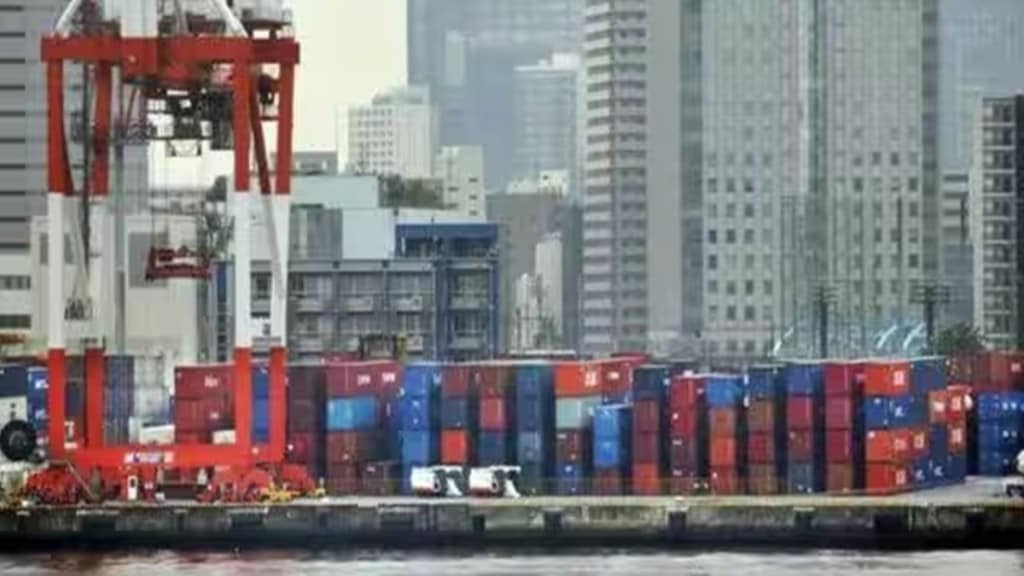Discounting their optimism, trade experts and firms from key export-oriented industries now believe that India’s merchandise exports, in value terms, may stay flat in FY24 as compared to FY23, mainly due to slowdown in global demand and fall in commodity prices.
“Because of the high inflation and rising interest rates, there is a slowdown in demand for several value-added goods including the consumer goods,” said Ajay Sahai, director general, Federation of Indian Export Organisations (FIEO). “I feel we will still touch around $450 billion in merchandise exports in FY24 (same as last year),” Sahai said. FIEO had in June pegged gods exports to touch $500 billion in the current fiscal year.
In the first five months of the current fiscal year, India’s merchandise exports contracted 11.9% year-on-year to $172.95 billion, according to provisional figures released by the commerce ministry. Though exports shrank for the seventh straight month in August, the rate of contraction came down from double digit levels to 6.86% in the month.
To reach $450 billion, exports in September-March will have to rise 9.1% year-on-year. In September-March FY23, merchandise exports had fallen 1.6% on year.
“Commodity-linked export values, such as those for petroleum products, are expected to contract year-on-year both on account of lower prices and volumes,” said Amruta Ghare, economist, Barclays. “Exports of commodities which are more sensitive to global demand–ready made garments, textile yarn, gems and jewellery–have also shown double digit contraction so far,” she said.
Out of 30 major commodities, exports of 18 have contracted year-on-year in the April-August period. The exports of petroleum products have contracted 27.4% during the period, and that of engineering goods have contracted by 4.6%. Both these products collectively constitute 44% of total merchandise exports.
Exports of organic and inorganic chemicals and gems and jewellery have also contracted by 15.5% and 26.2%, respectively, in April-August.
A combination of both–depressed commodity prices and slowdown in external demand–caused exports to falter this year; whereas, last year, high commodity prices aided goods exports.
In the first five months of FY24, the price of India’s crude oil basket has averaged $80.1 a barrel, while in the same period last year, it had averaged $106.3/bbl.
India’s Wholesale Price Index (WPI)-based inflation, which measures price pressures of commodities at the input level, has averaged (-)2.09% in April-August; whereas, in the first five months of FY23, WPI inflation had averaged 14.96%.
Farida Group’s (India’s top leather exporter) Chairman M Rafeeque Ahmed said that in the current year, exports of leather products would contract by about 15-18%. “The orders that have got till March, it is 15% lower than the orders we received last year…we export to US, EU, UK and Australia. We have witnessed a massive contraction in export orders from all these regions, particularly US,” Ahmed said.
Electronic goods exports, however, appear to be a bright spot, having grown 35.2% in April-August. Experts believe the production-linked incentive (PLI) scheme to have caused the rise in electronic goods exports. “Exports part of the PLI schemes (electronics) have shown robust growth so far, and are likely to be higher than FY23 levels,” said Ghare.
Going forward, the sharp contraction in exports is expected to reverse in H2 FY24 as prices of commodities, particularly crude, have started to rise.
On Monday, crude was trading at over $94 a barrel amid supply tightness in the market after Saudi Arabia and Russia extended production cuts.
“If you notice, the decline in exports is being arrested…probably from October, we may see a rise in exports,” FIEO’s Sahai said.
Bank of Baroda Chief Economist Madan Sabnavis said, “there is a chance that things may change in the second half and we would be able to grow our exports marginally by around 2% (in FY24).”

